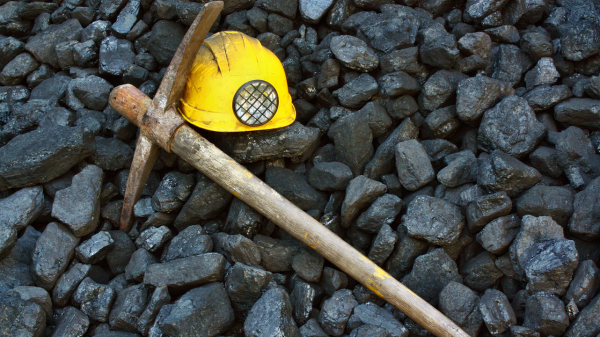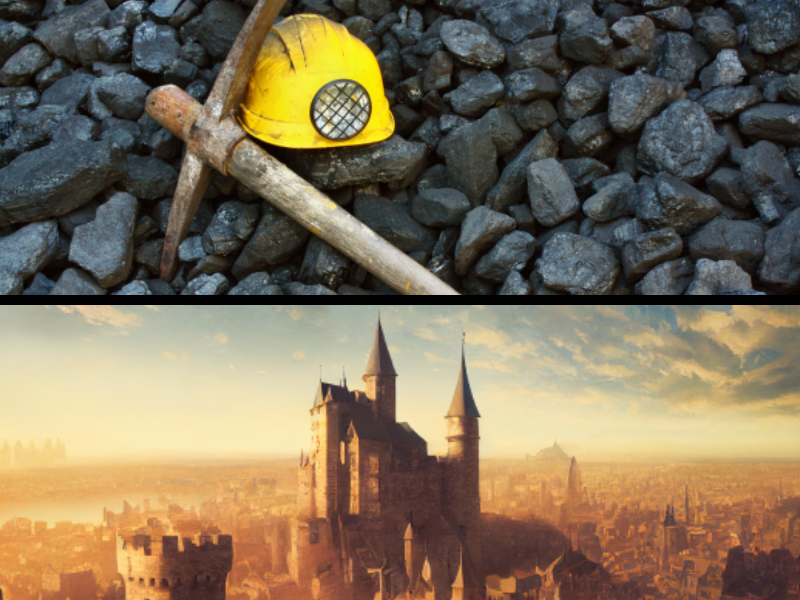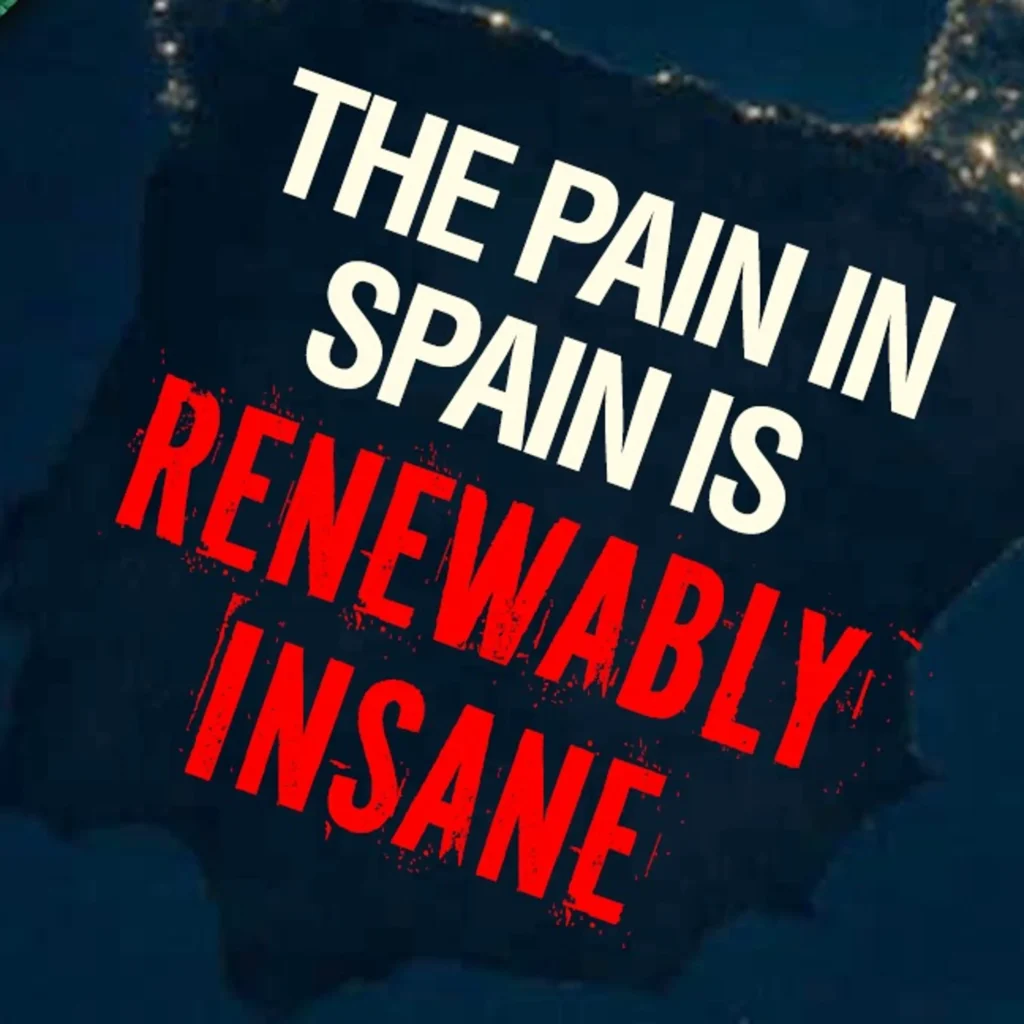IN THIS ISSUE:
- More Ways Coal Improves the Economy and the Environment
- United Nations IPCC Hid the Medieval Warm Period

More Ways Coal Improves the Economy and the Environment
Since misanthropic environmentalists and their Western-world-hating fellow travelers in academia and in the political realm discovered climate alarm as a fashionable and effective way to hamper economic growth and constrain consumerism, coal—long the foundation of industrial development and the modern power grid—became the ugliest of stepchildren in energy policy discussions.
To be clear, burning coal to generate electric power does directly produce more carbon dioxide (CO2) and traditional air pollutants than other electric-power generating sources do. However, emissions of pollutants from modern power plants pose no health problems at current levels, which leaves us with CO2.
CO2 is the molecule of life, the foundation of life on Earth, necessary for plant photosynthesis, and thus all terrestrial life. It has been declining in the atmosphere for billions of years, and during the last ice age it dipped to just a few tens of parts per million above the level necessary for continued photosynthesis. CO2 levels rebounded after the Earth recovered from the most recent glacial period, and since the Industrial Revolution human industrial activities have added CO2 to the atmosphere. The increase in CO2 has benefited plants, animals, and humans alike and is thousands of times below any threshold for threatening human health directly.
Based on speculative forecasts about the secondary or indirect affects of CO2 contributing to a slight warming of the world in the latter part of the twentieth century, radical environmentalists and others who could profit in some way from transitioning America’s economy to an alternative if less effective, efficient, and productive energy system seized on fears of climate change to restrict CO2 emissions sharply and rapidly. Because coal-fueled power plants, which made up almost half of electricity generation at the time, were the largest single identifiable source of such emissions in the United States, coal use became the first target of the deindustrialization crusade.
The climate alarm crusade has been effective in reducing coal use in the United States. Nationwide, coal fell from more than 42 percent of power generation in 201l to just 16 percent in 2023. Leaving aside the fact that the substitution of wind, solar, and battery storage for coal has compromised the reliability of the power grid and resulted in a dramatic increase in electric power costs, the decline in coal use is affecting other parts of the economy in ways not often discussed in the media but that are now becoming hard to ignore.
In the U.K., for example, the greener-than-thou government shut down the coal industry decades ago, and now it finds itself essentially taking over one of the last “virgin” steel producing facilities in the country and importing coal to keep its blast furnaces functioning.
British Steel was purchased by the Chinese steel manufacturer Jingye Group in 2020. Jingye stopped ordering coking coal used for steel production in anticipation of shutting down the Scunthorpe facility, which employs more than 2,700 people. As described in The Independent, the British government acted to keep the facility open, ensuring continued coal use in the process.
“Steelmaking in Scunthorpe will continue after the government confirmed the arrival of a new shipment of raw materials on Sunday, crucial to helping ensure the blast furnaces at British Steel keep running for the coming months,” reported The Independent. “The shipment of 55,000 tonnes of blast furnace coke has arrived in the UK to fuel the Scunthorpe plant in North Lincolnshire, and more than 66,000 tonnes of iron ore pellets and 27,000 tonnes of iron ore fines are soon to arrive.
“It comes after ministers used emergency powers to take control of British Steel and continue production at the site after what was thought to be a plot to sabotage the Scunthorpe plant by its Chinese owners Jingye,” The Independent wrote.
The war on coal is also impacting U.S. steelmaking, with governments and climate profiteers pushing a transition to other technologies for steel production. This is one factor compromising domestic steel production, leading to the shutdown or takeover of steel plants by international corporations aiming in part to get credit for reducing emissions in their home country by cutting emissions in the United States.
Although one can recycle steel using electric arc furnaces, one can’t produce virgin steel from iron through that technology. Electric arc furnaces produce fewer emissions than traditional blast furnaces at the facility site, but they use more much more electricity, which may offset some of the emissions gains, depending upon the source of the power. In addition, the recycled steel that electric arc technologies produce is commonly considered of lower quality than the virgin steel produced by blast furnaces.
Whatever one’s view of the merits of different types of steel and steel production technology, the value of coal to domestic steelmaking is largely ignored in debates on climate change.
Two other problems arising from the war on coal have only recently been recognized. One was recently discussed at Discover Wild Science:
In an era where infrastructure is the backbone of economic and social development, a silent crisis looms on the horizon: the shortage of fly ash. This gray, powdery byproduct of coal combustion has become an unsung hero in construction, quietly reinforcing the concrete structures that define modern civilization. But as the world shifts towards cleaner energy sources, the availability of fly ash is dwindling at an alarming rate. Could this unassuming material hold the potential to disrupt the very foundations of our future developments?
Fly ash has long been a staple in the construction industry, especially in the production of concrete. Its unique properties, such as high strength and durability, make it an ideal substitute for Portland cement. By incorporating fly ash, builders can create structures that are not only stronger but also more environmentally friendly. The use of fly ash reduces the carbon footprint of concrete production, aligning with global sustainability goals. As cities expand and infrastructure demands surge, the reliance on fly ash has only intensified.
That’s right: it turns out that one “waste” byproduct of coal is fly ash, but fly ash isn’t waste at all but an important component of cement, meaning the dwindling of ash piles is making concrete production more expensive and compromised.
Another competing use for dwindling fly ash has recently been in the headlines as well. The United States, and the world more generally, is dangerously dependent on China for rare earth elements or minerals that are critical to dozens if not hundreds of modern technologies—including technologies promoted by environmentalists, such as electric vehicles, solar panels, and wind turbines. The trade war or tariff tiff between the Trump administration and the Chinese Communist regime has focused renewed attention on this danger. After Trump announced significant tariffs on Chinese imports, China retaliated, in part by restricting the export of key rare-earth elements it controls, threatening some critical industrial manufacturing and assembly in the United States.
The United States has abundant rare-earth elements, but environmental restrictions largely make it impossible to mine or refine these materials domestically, for all practical purposes. Fly ash, however, contains rare earths which can be recovered, and more easily and cheaply than from conventional mining, as Yahoo.tech.com reports:
Researchers recently uncovered a treasure trove of rare earth elements—crucial materials for everything from smartphones to wind turbines—in waste left over from burning coal.
A 2024 study led by scientists from the University of Texas at Austin estimated there’s $8.4 billion worth of rare earth elements in U.S. coal ash. This diamond-in-the-rough discovery could reduce dependency on foreign sources for the valuable materials, as Interesting Engineering reported in March.
Squeezing additional value from waste can help address another problem: Conventional mining for the critical materials has high monetary, social, and environmental costs. In comparison, the rare earth elements in coal ash have been separated in advance via coal-burning from the ore that normally contains them. This means it can take less energy to refine the materials, per [Interesting Engineering (IE)].
The researchers estimate there are approximately 11 million tons of rare-earth minerals in U.S. coal ash. By contrast, the U.S. government estimates the United States has 1.4 million tons of rare earths in conventional resources. This means there is potentially eight times the amount of rare earths in coal ash than in known U.S. reserves—making fly ash even more valuable. Once again, as coal use for electricity is declining, so will the amount of fly ash available for rare-earth extraction. If coal-fueled electricity increased, however, there would be more than enough coal ash to go around for use in cement production and in rare earth extraction.
The moral of the story: coal could still serve as a critical resource for electricity production, while also helping to keep the U.S. steel industry viable, critical infrastructure construction humming along, and reducing U.S. dependence on China and other countries for minerals critical to national defense, electronics, the automobile industry, and alternative energy technologies. That can only happen if the government allows it.
Think coal lacks value? Think again.
Sources: Yahoo Tech; Newsbreak; Chemanalyst; The Independent

United Nations IPCC Hid the Medieval Warm Period
New research published in the journal Nature suggests the Medieval Warm Period (MWP) not only existed—a historic climatic fact that climate alarmists have tried to erase from the history books—but was at some points warmer than today. If true, this means the twenty-first century has not experienced high temperatures unseen in the past 1,000, 2,000, 12,000, or 125,000 years, as the mainstream media and the U.N. Intergovernmental Panel on Climate Change have claimed over the past two decades.
The researchers, a team of scientists from universities and research institutes in Italy and Switzerland, used satellite data, ground penetrating radar surveys, and radiocarbon dating of material from boreholes to examine the Boulder Clay Glacier (BCG) in Victoria Land on the southern coast of Antarctica. Antarctica is an important area of study if one wishes to understand the climatic history of the Earth, because as the researchers note, “[t]he Antarctic landscape is one of the most stable environments on the Earth, at least since approximately 14 million years ago when most glaciers in continental Antarctica changed from temperate to cold-based, and previous extensive fluvial activity disappeared.”
Their examination of the data sets:
… detected a large landscape change on a coastal glacier in continental Antarctica (Boulder Clay Glacier) that occurred in the Medieval Warm Period [specifically between 900 and 989 years before the present]. Such change consists in a glacial unconformity marked by a continuous sediment layer and an erosion channel on the past glacier surface. This channel, more than 4 kilometers long, represents a local deepening of a glacial unconformity that cuts the underlying glacial strata and was clearly imaged and mapped by Ground Penetrating Radar data.
The channel, indicating continuous flowing water, and the material found there, indicate that at the time the area was free of ice, which covers it today. Running water on Antarctica’s surface, and “persistent drainage networks” or streams, have been known to exist on the continent despite its frigid environment year-round, since the early 1900s. However, even during the recent period of modest global warming, the water flow has been insufficient to move much sediment. “It is also noteworthy that under current climatic conditions, despite some of the effects of recent climate change that have been observed even in continental Antarctica, there is no evidence of meltwater on the BCG, and the surface of the glacier is permanently snow-covered,” the authors note.
The research team discovered the opposite to be the case during at least parts of the MWP, when surface water flow sufficient to move large amounts of glacial till, consisting of rocks, gravel, sand, and moss, formed on the surface, where it does not exist now.
The conclusion, according to the study, is this:
… an unprecedented palaeo-erosion event occurred on the surface of an Antarctic glacier (northern Victoria Land, continental Antarctica) during the MWP between 900 and 989 cal BP, producing a glacial unconformity and a continuous sediment layer above it, as well as a supraglacial erosion channel extending over more than 4 km.
Putting the study—which has garnered almost no coverage in the mainstream media—in the broader context of the climate change debate, self-proclaimed Earth scientist professor in exile Matthew Wielicki writes,
The most insidious and fraudulent aspect of modern climate science isn’t flawed models or uncertain predictions… it’s the deliberate erasure of past climatic states that undermine the prevailing narrative. The IPCC, ostensibly tasked with objective scientific assessment, has become a vehicle for confirmation bias, selectively omitting historical climate extremes to support alarmist conclusions. I’ve extensively documented this inherent bias, highlighting how it shapes and distorts their findings.
One such selective amnesia case is the historical megadroughts. These natural extremes far exceed modern droughts attributed to human-caused climate change, yet the IPCC habitually overlooks such critical historical data. …
Similarly, the [MWP]—a globally recognized warm epoch from roughly 950 to 1250 AD—poses an existential threat to the IPCC-endorsed narrative that modern warming is unprecedented. Initially documented extensively, the MWP was systematically erased from mainstream climate records following the infamous hockey stick graph popularized by Michael Mann in 1999. This graph significantly flattened historical temperature variability to emphasize recent warming, providing political ammunition for urgent climate action despite contradictory historical evidence.
This erasure isn’t accidental. The IPCC’s Sixth Assessment Report (AR6) minimizes the MWP, often describing it as a regional or modest climate fluctuation… not a globally significant phase. This vague framing allows them to avoid confronting the wide body of peer-reviewed evidence showing synchronized warming across both hemispheres, a conclusion that undermines the entire premise of modern warming being “unprecedented.”
This new study reestablishes a significantly warmer MWP in climate history. Although the research looked at a single location, it is important to note that that then, as now, Antarctica was the coldest region of the Earth and has been climatically stable for millions of years, so there is no known reason a significant warming there wouldn’t have been reflective of a general warming elsewhere around the globe.
Sources: Irrational Fear; Nature





